Traditional Christmas Food From Around the World [With Photos!]
How about we share a winter holiday trip together? No need to pack your suitcase or buy a plane ticket. Let’s have a look at traditional Christmas food from all over the globe instead!
When it comes to the winter holidays, food traditions are an important part of the celebrations in countries around the world, even if the foods are different from country to country.
(Likewise, Santa is different too, depending on where you live).
You might indulge in mince pies, or perhaps ham is more your style. For others, a holiday meal wouldn't be complete without fried chicken, fruit cake or salted cod. Depending on where you grew up, and where you live now, the seasonal delicacies that grace your table may be sweet, savory, or a little bit of everything in-between.
Let's take a look at different Christmas and Hanukkah food traditions around the world.
Table of contents
- 1. Bacalao, the Traditional Mexican Christmas Food
- 2. The Traditional Christmas Food in Germany: Christmas Goose
- 3. A Traditionally American Christmas Dessert: Fruitcake
- 4. The Surprising Japanese Christmas Tradition: Fried Chicken
- 5. Kūčios, Lithuania’s Christmas Meal
- 6. Celebrate Hanukkah in Israel with Latkes
- 7. Panettone, One of Italy’s Christmas Breads
- 8. Spend Christmas in Costa Rica, Eat Traditional Tamales
- 9. The Traditional Christmas Pudding From England
- 10. The Famous Bûche de Noël of French Christmases
- 11. Bulgaria’s Traditional Christmas Dish: Kolivo (коливо)
- 12. Melomakarona (μελομακάρονα), a Sweet Greek Christmas Tradition
- 13. More Traditional Christmas Treats: Kołaczki From Poland
- 14. In Sweden, Christmas Comes with Saffron Buns
- 15. Roast Pig, the Traditional Christmas Food in the Philippines
- 16. Joulupöytä, Finland’s Traditional Christmas Food Board
- Which Food Will You Try During the Holidays This Year?
1. Bacalao, the Traditional Mexican Christmas Food
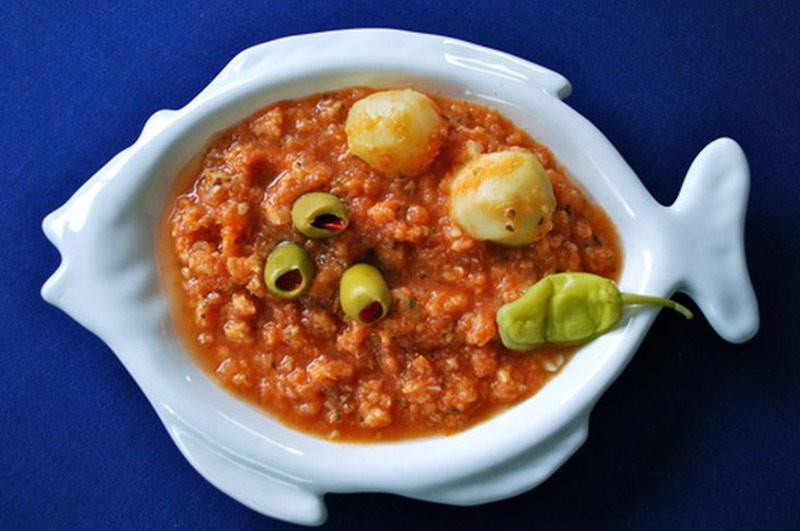
Bacalao, or salted cod, is not common in most countries during the holidays, but it’s a staple dish in Mexico.
Before refrigeration existed, salting and preserving meats and fish was necessary. Today, this is no longer the case, but the practice still exists. And when, in the case of bacalao, the fish is rehydrated and cooked, the result is tender and delicious.
In Mexico, the ingredients to make theBacalao a la Mexicana include tomatoes, ancho chiles, onions, cinnamon, potato and olives. It’s filling and it certainly warms you up!
Make bacalao with this recipe.
Related Learning: Merry Christmas in Spanish: All the Spanish Holiday Vocab You Need for a “Feliz Navidad”
2. The Traditional Christmas Food in Germany: Christmas Goose
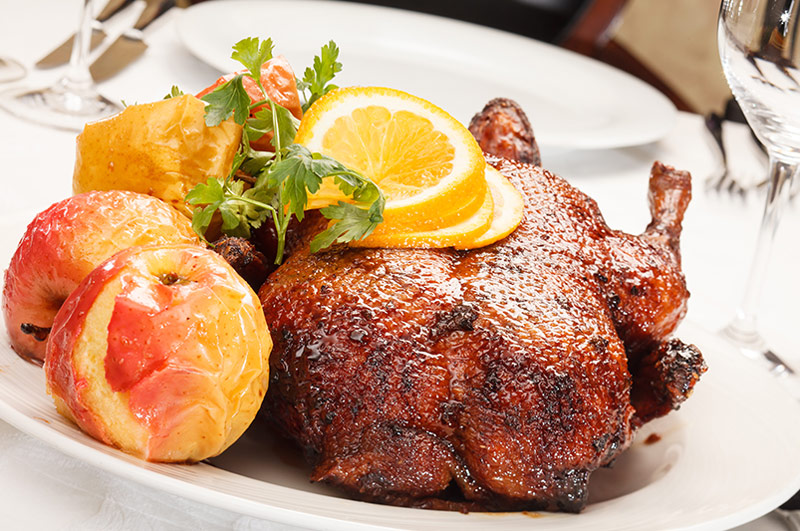
The German Christmas feast historically centres around the Weihnachtsgans, the Christmas goose.
A tradition dating back to the Middle Ages, eating goose was originally tied to St. Martin’s Day, but eventually became a part of the Christmas meal.
Often stuffed with apples, chestnuts, onions, and prunes, then spiced with mugwort and marjoram, Germans serve the goose alongside red cabbage, dumplings, gravy and sauerkraut.
The oldest known recipe for this dish comes from a cookbook published in 1350, ‘Das Buch von guter Speise’.
You can read more about German Christmas and holiday traditions here!
Want to have a German style Christmas dinner this year? Here’s a recipe for for Christmas goose.
3. A Traditionally American Christmas Dessert: Fruitcake

Calvin Trillin theorized that there is only one fruitcake and that it is simply sent from family to family each year. Most Americans turn their noses at the very thought of fruitcake. But for some reason, this item keeps making the rounds.
(Something made possible because the cakes are soaked in alcohol or other liquors to keep them from molding.)
Don’t believe me? On The Tonight Show, Jay Leno sampled a cake that someone had kept as a family heirloom dating back to 1878. In 2017, the Antarctic Heritage Trust found an 106-year-old fruitcake they deemed “almost edible”.
As a kid growing up, my parents always had two or three of them hidden in the pantry around Christmas. They received them as gifts and would step around them until – whoops – they were forgotten, had ‘expired’ (as much as a fruitcake can expire), and could be safely discarded without offending the other party.
So why do we eat it? Or at the very least, gift it?
At some point in history, fruitcake was a display for prosperity. Dried fruits and nuts were expensive items and so people served this cake at special events – like Christmas – to, for lack of a better way to say it, show off.
Even though fruitcakes are no longer a way to display wealth, giving them is a tradition that has just stuck.
Try this recipe for Christmas fruitcake.
4. The Surprising Japanese Christmas Tradition: Fried Chicken
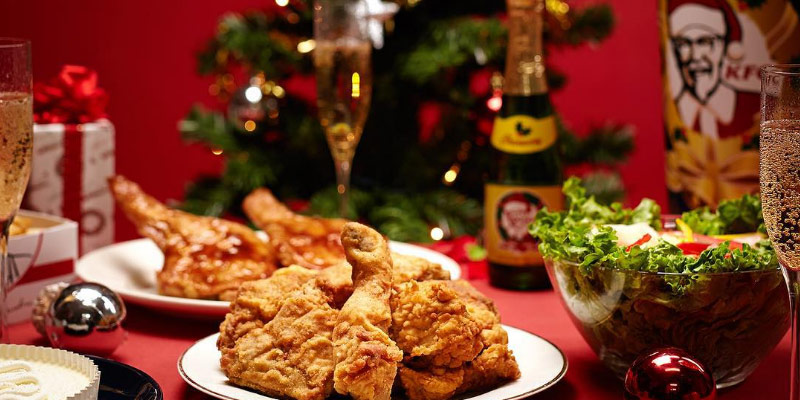
In Japan, the Christmas season is the most wonderful time of the year for Kentucky Fried Chicken, or KFC, a fast food chain. Because about 3.6 million Japanese families eat KFC on Christmas Eve, they often need to reserve their meal up to two months in advance.
During the 1970s, KFC put together a holiday party bucket and behind it, a brilliant marketing plan. At the time, Japan didn’t have many Christmas traditions. KFC filled that void by telling consumers “here is something that you should do on Christmas”. The trend caught on quickly.
Today, the KFC Christmas bucket doesn’t include just fried chicken. It also includes a Christmas cake – another important food item on Japan’s holiday menu.
Here’s a good recipe for Japanese Christmas Cake.
Related Learning: “Food” in Japanese: The Ultimate Guide to Japanese Cuisine
5. Kūčios, Lithuania’s Christmas Meal
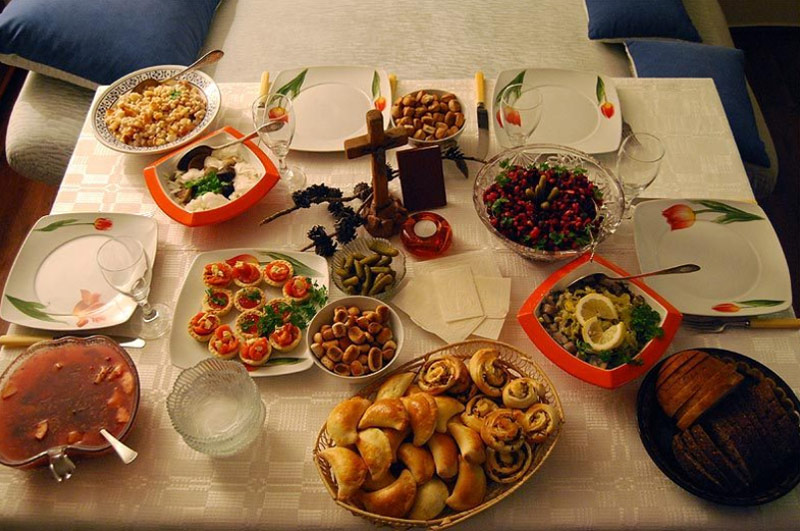
Kūčios, the traditional Lithuanian Christmas dinner, is held on December 24th every year. And hosting kūčios is no small feat – this meal can take up to a week to prepare.
For Lithuanians, the holidays are about spending time with family, so a week-long meal prep is certainly a great opportunity for families to get together and is likely why the tradition has persisted.
Originally kūčios had nine dishes. It was a pagan practice that later expanded to 12 dishes (one for each apostle) when it was appropriated by the Christian church.
No meat, dairy, or hot food are a part of this meal. Instead, it includes fish, breads, and vegetables. Some of the items you might see on the menu are herring served in a tomato, mushroom or onion based sauce, smoked eel, vegetables such as potatoes, sauerkraut (it’s cabbage so it counts as a vegetable, right?), and mushrooms, bread or cranberry pudding.
Try a recipe for cranberry fruit jelly and read more about it in this post covering holiday foods, decorations and greetings from around the world.
6. Celebrate Hanukkah in Israel with Latkes
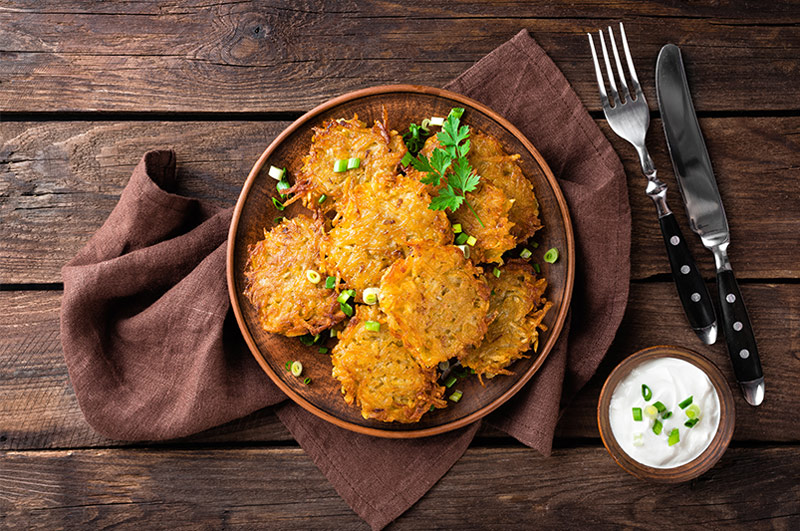
Since the Middle Ages, latkes have been an important part of Hanukkah tradition. Latkes are fried potato pancakes cooked in oil. This recognizes that the Second Temple kept the Menorah burning with oil for eight days.
Other dishes enjoyed as a part of this tradition include fried donuts and fritters. Hanukkah gelt, small chocolate coins, are given to children by relatives.
Try this latke recipe.
Related Resources: Benny’s Top Resources for Learning Hebrew
7. Panettone, One of Italy’s Christmas Breads
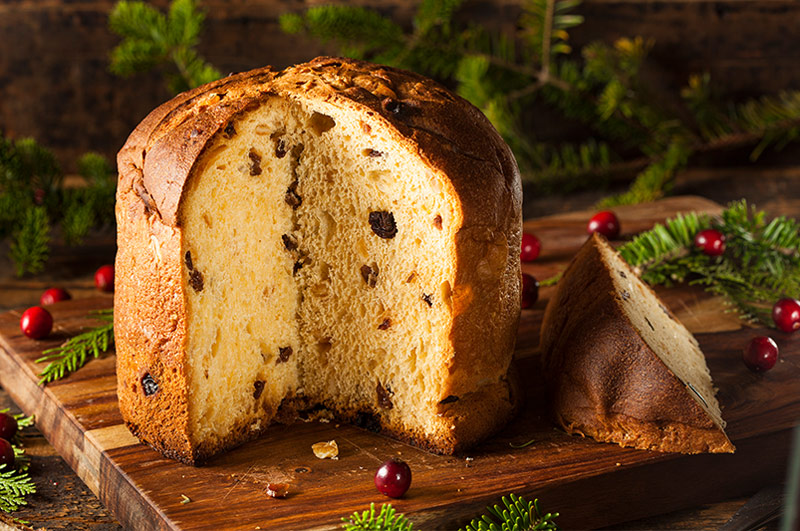
Italy has numerous regional traditions when it comes to Christmas dinner.
In some parts of Italy, they celebrate with The Feast of the Seven Fishes. This meal includes seven different fish prepared in seven different ways. More often than not, two of the featured items are baccalà (salted cod) and calamari.
In other areas, they eat roasted lamb, or poultry roasted or boiled and seasoned with sauce.
Sweets also play an important role during the holiday season, and in Northern Italy, one of the infamous holiday sweets is panettone – a cake with candied fruit, chocolate, raisins, and nuts.
Other treats include torrone, nougat, marzipan, zeppole, cannoli, and pandoro.
You can read more about Italian Christmas and holiday traditions here!
8. Spend Christmas in Costa Rica, Eat Traditional Tamales
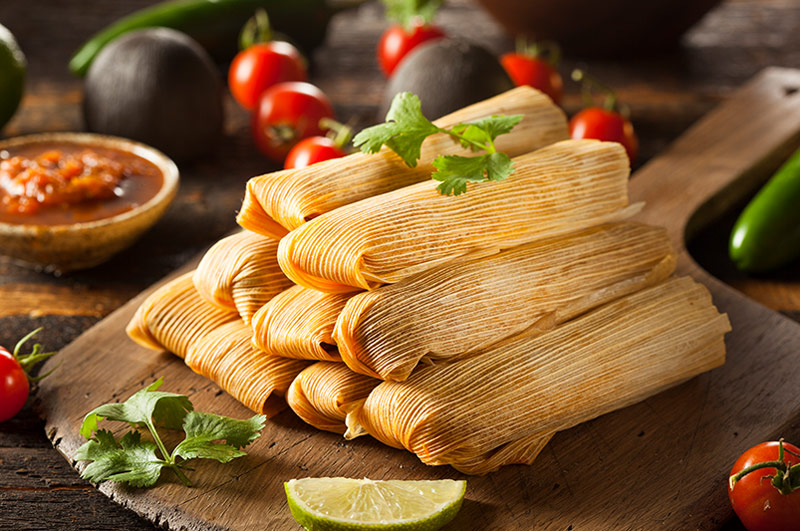
In Costa Rica, making tamales is a Christmas tradition and every family has their own ‘secret’ recipe.
The basis of tamales is a corn dough, wrapped in a banana leaf or corn husk, and then steamed. Some are stuffed with pork, and some with beef or chicken. Other foods that may be a part of the filling are garlic, onion, potatoes, or raisins.
Try this recipe for tamales.
Learn some Spanish food vocab in this post!
9. The Traditional Christmas Pudding From England
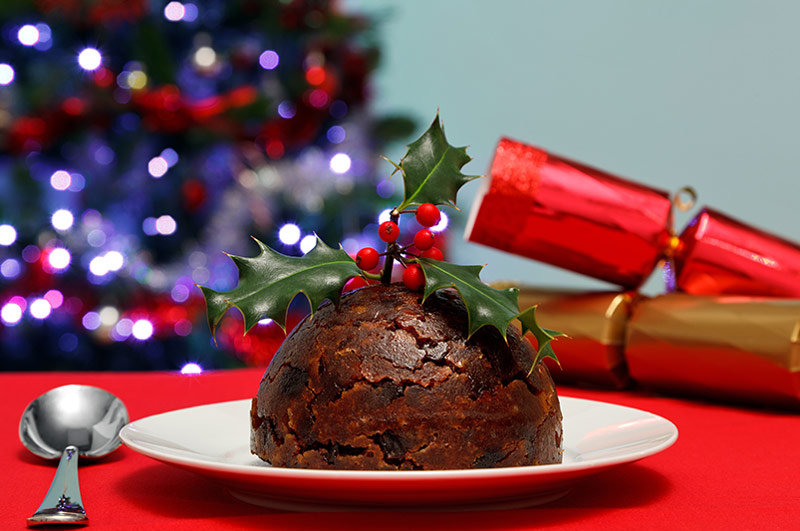
This dish goes by many names. Whether you call it figgy pudding, plum pudding, ‘pud’ or Christmas pudding, this dessert is a key Christmas tradition in England, Ireland and some parts of the US.
Despite its name, plum pudding doesn’t actually include plums. Pre-Victorian era, ‘plums’ referred to what we now call raisins, and because dried fruits are an important part of this pudding, it is how it earned its name.
Primarily made of suet, egg, molasses, spices, and dried fruits, Christmas pudding is set alight with brandy immediately before it is served.
Try this classic Christmas pudding recipe.
10. The Famous Bûche de Noël of French Christmases
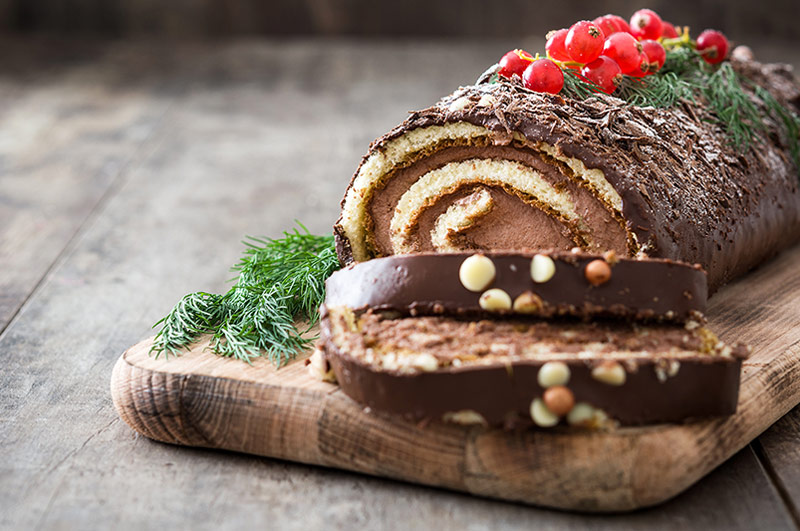
La Bûche de Noël is a dessert that symbolically represents the Yule Log – a wood log that was traditionally carried into the home, sprinkled with wine, and then burned on Christmas Eve. In the 1940s when the practice started to disappear, this dessert took up the mantle.
Often made from sponge cake and chocolate buttercream, la Bûche de Noël looks quite a bit like a real log.
Other variations of the dessert have emerged. Now you can find recipes for anything from tiramisu to cran-raspberry mascarpone, caramel cream to Meyer lemon.
You can read more about French Christmas and holiday traditions here!
Try this recipe for la Bûche de Noël.
11. Bulgaria’s Traditional Christmas Dish: Kolivo (коливо)
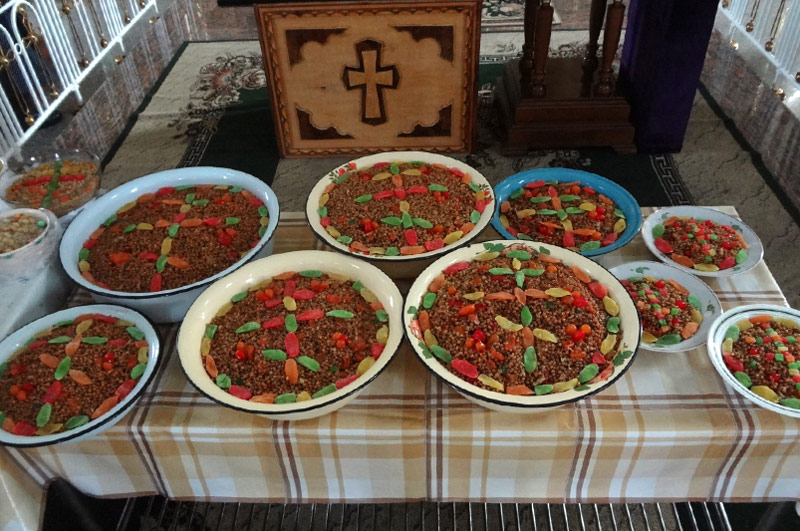
Kolivo, boiled wheat with sugar and walnuts, is often the first item to appear on tables come Christmas Eve in Bulgaria. Similar to a pudding, both Russia (кутья) and Poland (kutia) have comparable dishes.
Sometimes served with honey, poppyseed, other grains, rice, beans, or dried fruit, kolivo can be prepared in many different ways. It is often connected with Orthodox traditions. In addition to Bulgaria, it also appears on tables in Serbia, Romania, Georgia, and Ukraine.
12. Melomakarona (μελομακάρονα), a Sweet Greek Christmas Tradition
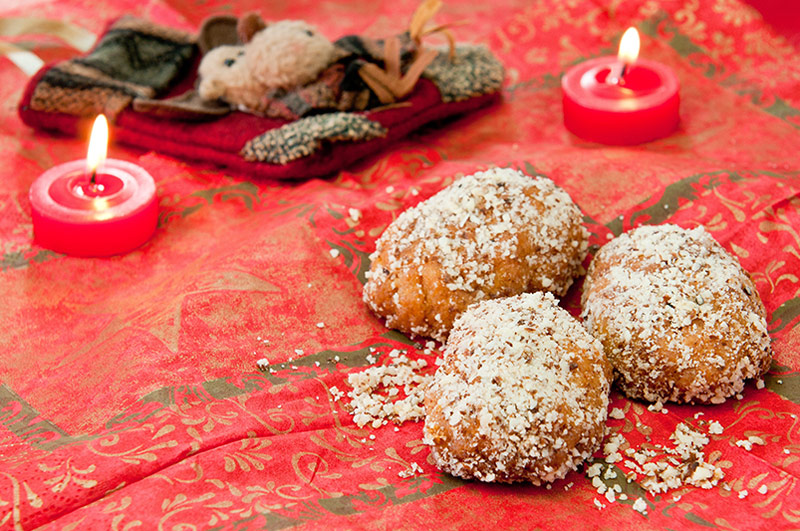
Sweet orange-zest cookies soaked in honey and topped with walnuts? Yes, please!
This item is a holiday treat that regularly appears on tables in Greece. Known as melomakarona, these cookies are often said to taste much like baklava.
Immediately after they’re baked, melomakarona are soaked in a honey-sugar water mixture then sprinkled with walnuts. There is also a less traditional version of this recipe dipped in dark chocolate.
Either way – sign me up.
Try this recipe for melomakarona.
Related Learning: Learn Greek Online: 39 Free Resources and Classes to Learn the Greek Language
13. More Traditional Christmas Treats: Kołaczki From Poland
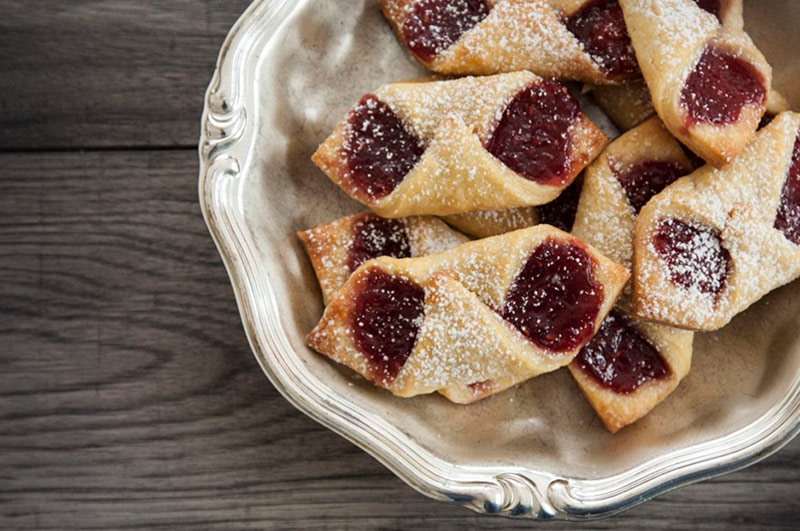
Another country with cookies on the menu come holiday season is Poland. Kołaczki is a flaky, jelly-filled confection, with dough often made with sour cream or cream cheese.
These fold-over style cookies come with a variety of fillings. If the standard apricot or raspberry doesn’t do it for you, you can also try poppyseed, nuts, or sweet cheese. They’re topped with confectioners sugar immediately before serving.
Try another traditional Polish recipe for cheese and potato pierogi.
Related Learning: Start Learning Polish – The Easy Way
14. In Sweden, Christmas Comes with Saffron Buns
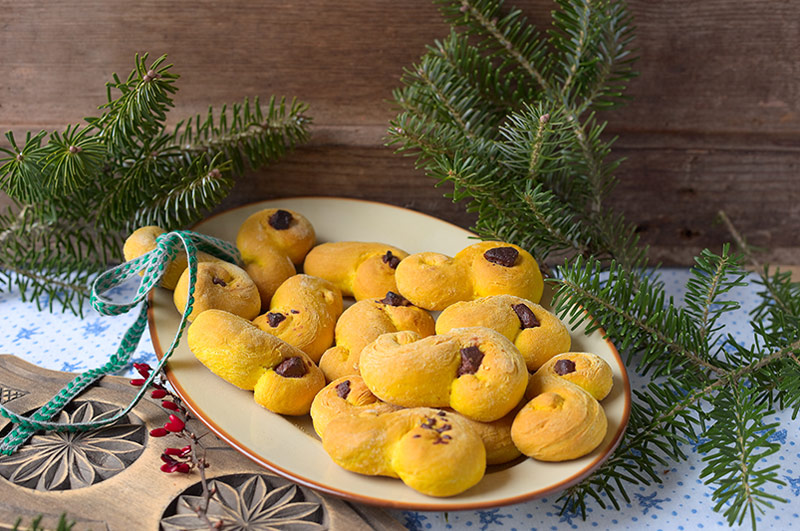
Julbord, a three course meal, is served come Christmas in Sweden. The first dish is usually fish – often pickled herring. Second, cold cuts (including Christmas ham) along with sausages are served. The third course is often meatballs and a potato casserole called Janssons frestelse.
For dessert, rice pudding is popular, but there’s another treat for which the Swedes are known to make around this time – saffron buns.
Saffron buns are sweet and often yellow in color (due to the saffron, of course!). They are shaped into an “S” and then baked into their final buttery form.
They’re served to the family by the oldest daughter, by tradition, but that shouldn’t stop you from trying your hand at making them, and most importantly, enjoying the end product.
Make Swedish saffron buns.
Related Learning: How to Learn Swedish: 37 Lessons from My 6 Months Living in Sweden
15. Roast Pig, the Traditional Christmas Food in the Philippines
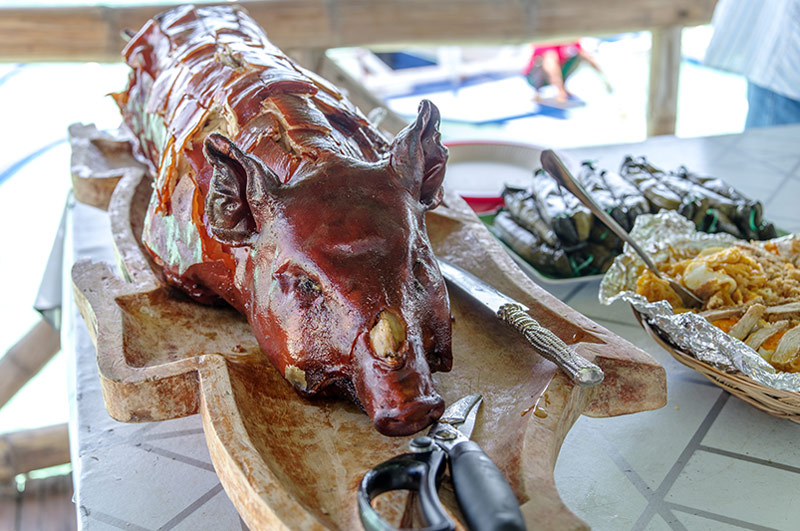
Noche Buena, Christmas dinner in the Philippines, takes place after families attend the Misa de Gallo (“Mass of the Rooster”). Hamón (cured pork leg) or Lechón (spit-roasted pig) are the main features. Their co-stars are often queso de bola (a ball of cheese), pasta, lumpia (spring rolls) and fruit salad.
Christmas is a big deal in the Philippines. Christmas carols start as early as September and end usually around January 9th, with the feast of the Black Nazarene. Official observance, however, is from December 16th until the first Sunday of the new year.
Make Filipino-style pineapple-glazed ham.
Related Learning: Benny’s Top Resources for Learning Tagalog
16. Joulupöytä, Finland’s Traditional Christmas Food Board
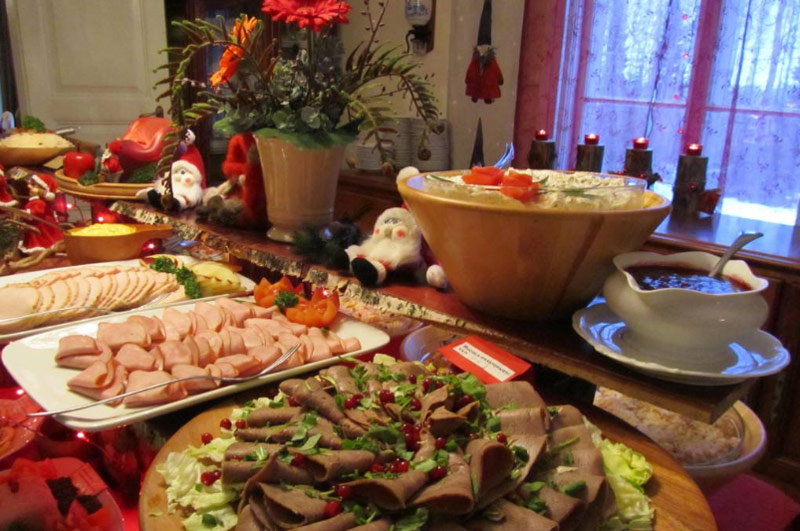
Fins go buffet style, or literally “Christmas table” style, for their Christmas meal with Joulupöytä. This traditional food board is comparable to the Swedish smörgåsbord or julbord. It contains several dishes typical of the season such as Christmas ham, fish, and casseroles.
Other items on the table may include mushroom salad, pickled herring, and Karelian stew. For dessert, joulutorttu (tarts), piparkakku (Gingerbread), and rice pudding are served.
Bake joulutorttu for Christmas.
Which Food Will You Try During the Holidays This Year?
Food traditions certainly abound across the globe come the holidays. No matter what you eat during this time of year, we wish you all:
Bon appétit, buen provecho, いただきます, kalon digor, 慢慢吃, dobar tek!

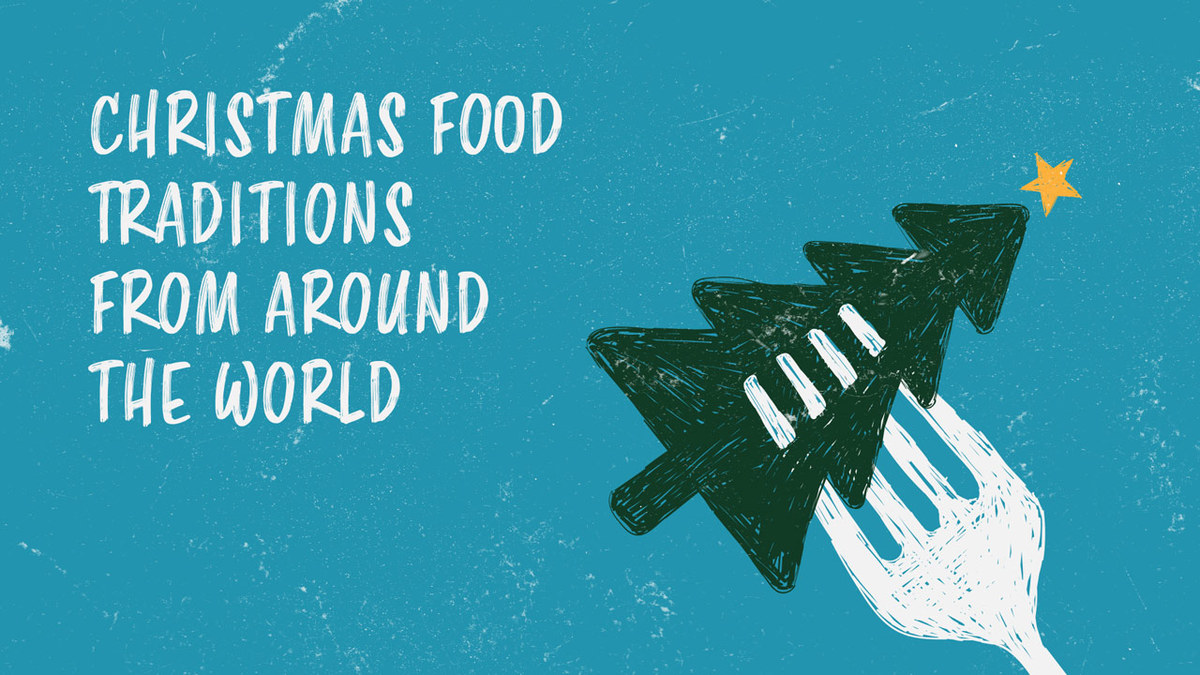

Social